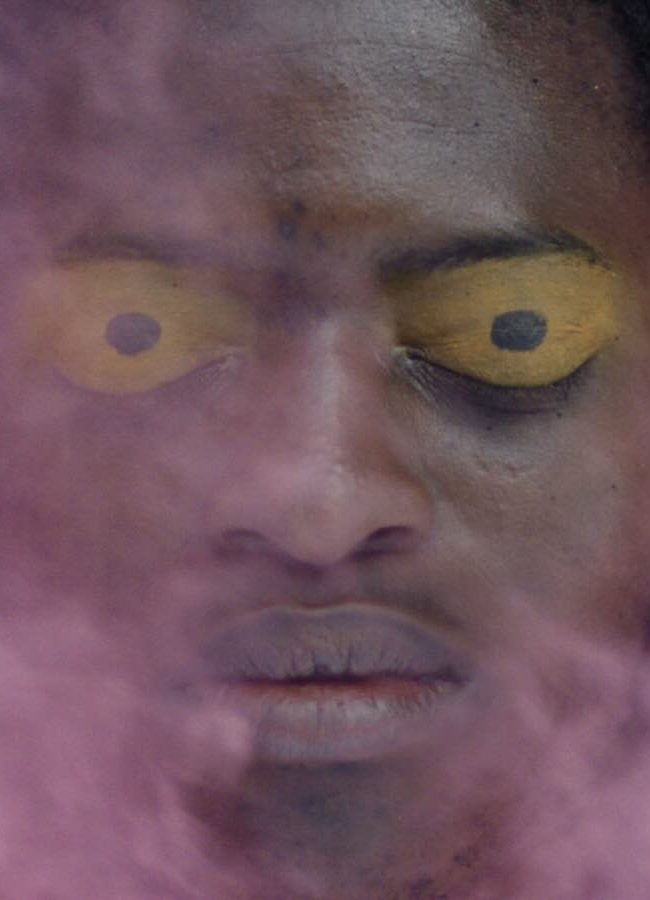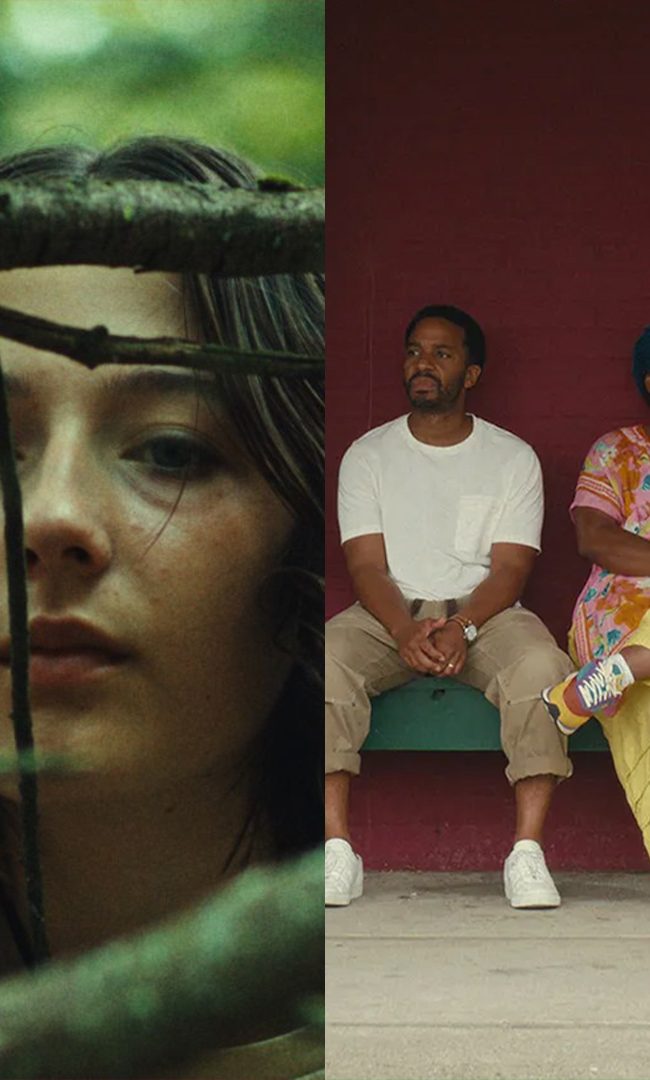A Conversation with Saul Williams & Anisia Uzeyman (NEPTUNE FROST)
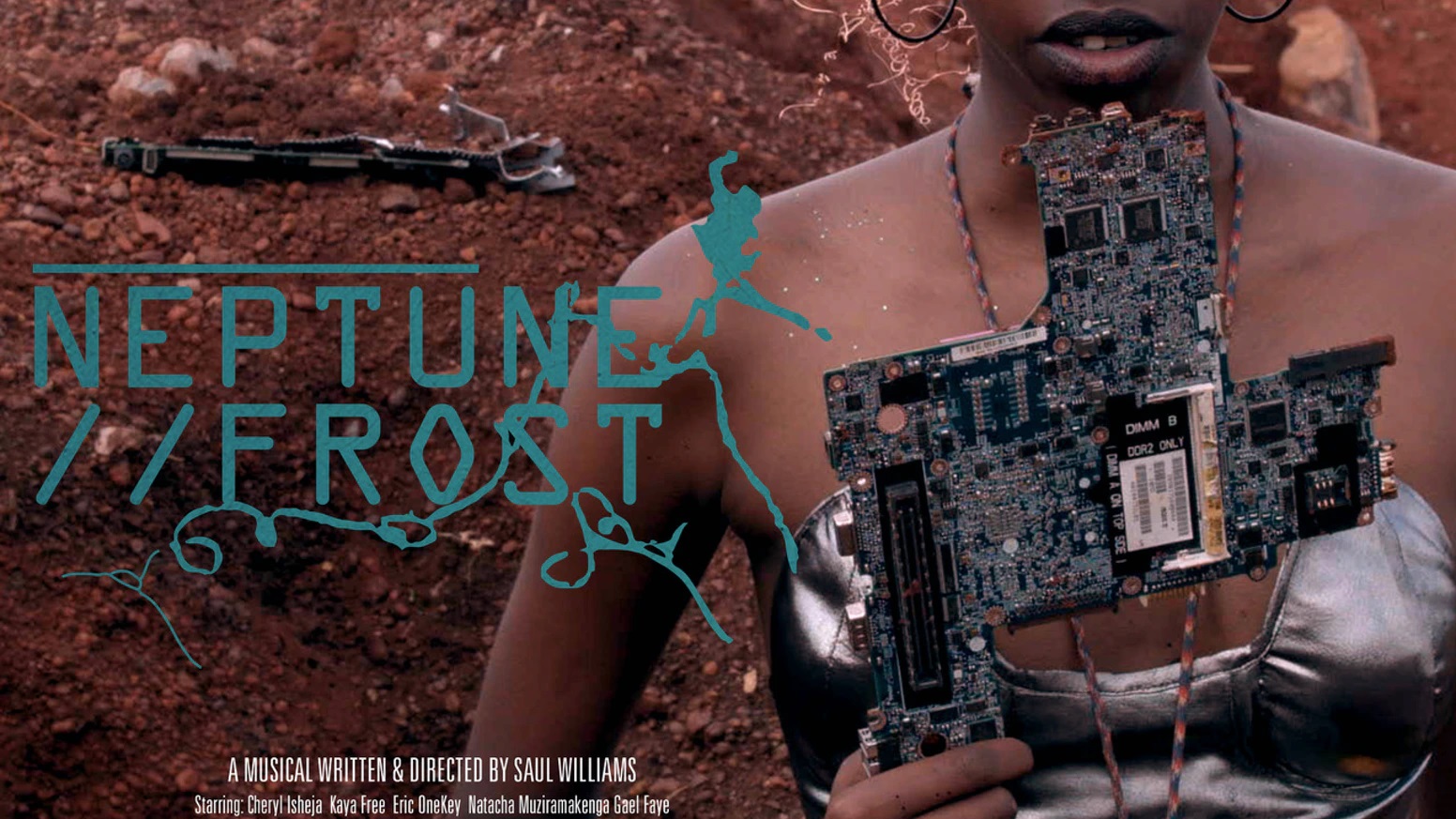
Multi-hyphenate artists and life partners Saul Williams & Anisia Uzeyman are the directors of the Afrofuturist musical Neptune Frost, which hits select theaters today from Kino Lorber. It is a visually stunning experience that takes us into Burundi where a group of villagers form a hacker uprising against the colonialist powers that try to exploit and discredit them. My interview with Mr. Williams & Ms. Uzeyman has been edited for length and clarity.
Hammer To Nail: Neptune Frost covers a wide variety of pressing topics, from gender identity to colonialism, to authoritarianism, but technology is the main thread that connects everything. What was your inspiration for this shared through-line in the film?
Saul Williams: Well, really I think you’re dead on because of the way that technology connects us to a spectrum of ways of seeing the world. I mean we browse our timelines and peruse all of these different realities at the same time. Simultaneously, we wanted to tell a story where we could fight with the idea of “we are the technology.” We are the hidden force that makes this machine progress, whether it is through the mining of precious resources, the labor force, or the progressive ideologies that have expanded our sense of humanity. Technology is a reflection of us, and [the character] Neptune is really coming into a sense of awareness through her connection to [the character] Matalusa and her coming-of-age. So the film aims to connect all of those realities through the gaze of technology and through the gaze of us realizing our power as technology.
HtN: I read that you considered making Neptune Frost both a graphic novel, and a stage musical, before creating a film. What made you decide that film would be the first platform for this story?
SW: The project was originally conceived as a stage musical and a graphic novel. The Graphic novel is still in the works. The surprise is that the film beat the graphic novel. Anisia and I did do a residency for the playwriting of the script and once we shared what we wrote during that residency, we met our lead producer Stephen Hendel, who produced Fela on Broadway, who was actually the one who made the suggestion to invest in this if it were a film. We may have been hesitant at first, but we realized that if it were a film, then we would then be able to be on location to introduce new actors, interact with new talent, and bring a vision to life in a much broader spectrum than perhaps we could’ve accomplished onstage.
Hammer To Nail: That’s fascinating, and I can’t wait for the graphic novel, by the way. I’ll definitely be on the lookout for that.
SW: It looks wonderful. It’s almost done.
Anisia Uzeyman: Yes, it’s beautiful. I think since the beginning of the idea, having a multimedia project was also really natural to the story, to have multiple entries to the story.
Hammer To Nail: The amazing costume design in the film was so visually striking. Could you talk about the process of working with your designer Cedric Mizero? How did the collaboration work and how did you all develop the looks for all of these distinct characters?
AU: We met Cedric in 2016 when we went to Rwanda to shoot the sizzle reel, and that’s when we also met a huge part of our cast. We were introduced to that young genius (laughs) who at that time was 22 or 23. And he sat with us and listened to the story, and the next morning, he came back to our house with sandals made of motherboard.
Hammer To Nail: Wow! Motherboard sandals?
SW: Immediately.
AU: Immediately
Hammer To Nail: That’s incredible.
AU: He spent the night building those shoes and he came back, and then he did the costumes on the sizzle reel. After that, it was just so organic. It was him, also because he has a body of work of its own. He’s a fashion… What would you call that?
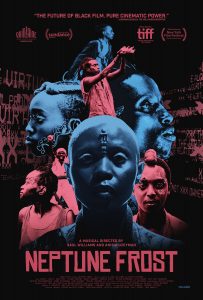
SW: I mean, he’s a fashion designer but also instinctively moving into art installations and beyond the world of fashion.
AU: Yeah, he was recently all over the continent, in England, etc. He has exhibitions, and he’s an artist. It was more like, “Oh, we want to collaborate with that artist.” He has a universe and builds all types of installations and incorporates his work that revolves around how to connect with everyday people to the fantastic.
SW: Which was ultimately connected to what we were doing with Neptune Frost and also the fact that he was in the process of working with recycled or upcycled goods and zero waste. It was just a beautiful synergy that totally aligned. So as we developed the story, we shared more and he spent the time from 2016-on preparing for– (To Anisia) I mean, he created like what, 50 costumes?
AU: Yes, and I just want to shout out to the crew with whom he works. A crew of like a dozen artists with whom he works on an everyday basis. He has a house with all of those artists there.
SW: He collaborated with [hair and makeup designer] Tanya Melendez, who’s known online as “Lady Soulfly,” who’s a good friend of ours. We were so interested in the meeting of Cedric and Lady Soulfly, and what they might come with together. So, Tanya arrived on the first day of shooting and they began collaborating immediately. You see the costumes, but I know you also see that hair and makeup. The fusion of the two was immediate. It just came to life on-screen as you can see.
HtN: The ensemble of actors gives absolutely incredible performances. What was the casting process like, especially for Kaya (who plays Matalusa), and Cheryl & Elvis (who play Neptune)?
SW: Anisia did screen tests, so we would meet these artists in the way that we met them when we first made the sizzle reel. I think one of the first artists we met right off the bat was Kaya. Anisia saw him perform. I arrived a few days later. We met immediately and it was just clear that that was Matalusa from the beginning. We learned that he already had a history with acting.
AU: And also he was just arriving from Burundi because, in 2015, a lot of student artists and activists fled out of the country because of the political unrest, which was quite violent. A few of them we met over the course of that first week because they were so much a part of the vibrant art scene in Kigali.
SW: We were attending concerts, open-mics, and looking at the local artists. It was the cream of the crop. We met Cheryl also at an open-mic performance backstage. We learned that she was a singer/dancer/performer and did another screen test, and it was clear.
AU: I think there was a mutual attraction to those actors who kind of magically came to the project because they were so enthusiastic about the story. It came very naturally. We didn’t, per se, do a casting call. It all happened very like, “Ah yes, this is the person!” Or people would come to us and it would be like, “Oh yes, it’s you. It’s clear.” For Elvis Ngabo, we met him through Cedric. He’s a young dancer, very talented who was already on East Africa’s Got Talent. Every one of them is an artist in their own right. When we saw Bobo [Elvis], the question was can he and Cheryl be that character [Neptune] and could they be twins? (Laughs)
SW: We didn’t meet Bobo until 2019 when we were in Rwanda preparing to shoot. We met him later in the process, but it was also screen test immediate.
AU: When we saw his eyes and when we saw Cheryl’s eyes, we were like, “Oh yeah, this is gonna work.”
HtN: Anisia, as the cinematographer, what were your artistic goals in terms of enhancing the film’s storytelling and character treatment through the lens?
AU: I think talking about the actors, I thought what I could bring is my knowledge of acting and actors. I’ve been working for a long time with actors, and I’m an actress myself. I think what I understood from that side of the camera informed the way I was able to capture or surround them by either proximity or distance between the camera and them, or how to enhance their emotions through colors and movements. A lot of it was factored around them, around how I can play with them almost. It’s like how can I be in dialogue with them to convey that movement, that emotion, or to give them an ambiance in which they would evolve emotionally. The creation of a mood, the creation of a color that would hit them, the way we are close, or the way we are letting them breathe. All of that was really for them, and my desire was to really be in dialogue with the performers.
HtN: I think that worked out pretty well.
AU: (laughs) Thank you.
HtN: One thing I want to touch on is the MartyrLoserKing project, which is the name of the villagers’ movement in Neptune Frost, but also the name of your 2016 album, Saul. What’s your experience been expressing this philosophical-political proclamation through both screen and music? How did it differ between the two mediums?
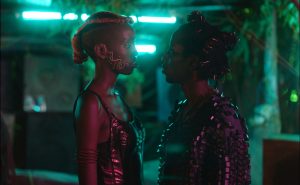
A still from NEPTUNE FROST
SW: As you mentioned, this project was conceived as a musical. And for me, the first step in trying to envision this world was to envision the sounds that belonged to it. That was the first step, and then writing to and around those sounds. So the story, the characters, much of it really was pulled from the music. I’ve been going to the music thinking of the story. One of the earliest songs for the project was a song called “Burundi,” which was my first take in trying to map out the synopsis, and it happened in a song. From there, we were able to pull ideas, and then other songs would be written and we would say, “What character does this belong to? Whose voice is this? Who’s singing?” And so, building out that world was, on one hand, I have to say extremely fun. I think it’s more fun oftentimes to create sounds, music, and what have you, surrounding an idea and try to fit it into a conceptual project rather than just freeform or freestyle. It also allowed us to research lots of dialogue. There was a lot of reading we did that helped inform the writing. It was inspiring to look into, all of these things that we’re thinking about, like the anti-LGBTQ laws on the continent. I just read today that there’s now one that’s about to be passed in Ghana.
HtN: Really?
SW: A “you don’t say gay” law in Ghana. But these things were on our timeline. We started working on this in 2011, so we started conceptualizing it. There were anti-LGBTQIA laws, WikiLeaks, Chelsea Mannin. There were all these things we wanted to write about and to show the connection between the two, and of course, music is a connector. And so building out the soundscape of Digitaria and of the world was really helpful. More than anything else, I say that it was helpful to have the sound palette in the same way that I think Anisia may have initially dove into a color palette. From there, you can paint.
HtN: How did you two bring together your own distinct visions to create a collaborative project like Neptune Frost? Do any parts of it feel “uniquely” individual to you, or “uniquely” a result of your shared vision?
AU: It is a shared vision. There are parts that can’t exist without the other. I don’t write music (laughs).
SW: But she listens and moves to it (laughs).
AU: And he can’t hold a camera. But I do think the project was enabled by our synergy.
SW: I think it’s really a complimentary sort of creative process because, as Anisia was saying, filling in the blanks like I may have an idea of something and Anisia might say, “How might that work on camera?” That forces me to consider an aspect of an idea that I hadn’t considered because I was just thinking in the void and not thinking about the camera and vice versa. So I think we both have a yearning for what we want to see, the kind of story we want to tell, what we feel empowered by, what we think could empower others, what we think the creative space is missing, and what we find exciting. Those are all shared ideas, and one of us may have put more thought into it than the other, but then we share those thoughts. Overall I say it’s complimentary.
AU: It’s complimentary, and I would say that we inspire each other. Each step is inspired by what we share.
– M.J. O’Toole (@mj_otoole93)
Kino Lorber; Saul Williams & Anisia Uzeyman; Neptune Frost film review








